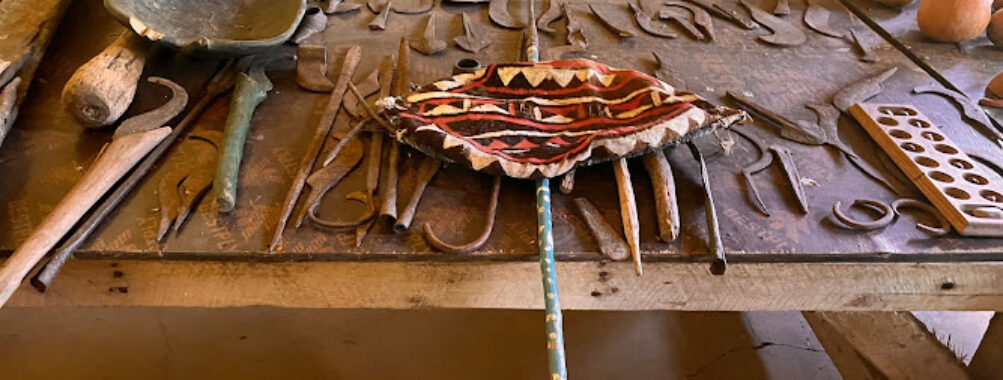
Abasuba Community Peace Museum
“`html
Table of Contents
Description
The Abasuba Community Peace Museum in Homa Bay County is one of those places that quietly surprises you. It’s not a grand, polished institution like you’d find in a capital city, but that’s exactly what makes it so special. Founded back in 2000, the museum was created to preserve the culture and history of the Abasuba people, an ethnic group with roots tracing into Uganda, who settled on Mfangano Island and the surrounding Lake Victoria region. Walking into the museum feels less like entering a gallery and more like being invited into someone’s living memory. The displays are intimate, the stories personal, and the whole atmosphere is grounded in community spirit.
While some visitors rave about its authenticity and the warmth of the people who run it, others might find it a little rough around the edges. That’s fair—it’s not a slick, high-tech space with interactive screens. Instead, it’s an opportunity to slow down, listen, and learn about traditions that could easily have been lost to time. Personally, I think that’s the charm. You’ll find artifacts, oral histories, and even connections to ancient rock art sites that dot the island. It’s a place where history and culture aren’t just preserved but actively lived and shared.
The museum is also community-driven, which means it’s not just about looking at objects in glass cases. It’s about conversations, storytelling, and sometimes even participating in cultural activities. If you’re the sort of traveler who values human connection and wants to understand Kenya beyond the usual safari routes, this place will stick with you long after you’ve left.
Key Features
- Founded in 2000 to preserve the heritage of the Abasuba people
- Located in Ramba, Waware, Suba North District, Homa Bay County
- Acts as a hub for peacebuilding and cultural education
- Showcases traditional artifacts, oral histories, and art
- Provides access to nearby rock art sites like Mawanga Cave and Kwitone Rock Shelter
- Wheelchair accessible parking and restrooms available
- Family-friendly environment, suitable for children
- Community-led, with opportunities for interaction and storytelling
Best Time to Visit
The museum is open year-round, but your experience can change with the seasons. If you want easier travel and clearer skies, the dry months between June and September are ideal. Roads are less muddy, and you’ll have fewer hiccups getting around. That said, I once visited during the rainy season, and while the journey was a bit of an adventure (think bumpy roads and sudden downpours), the lush greenery made the island feel alive in a way that’s hard to put into words. The rain also seemed to slow everything down, which oddly suited the reflective nature of the museum. So really, it depends on what kind of traveler you are—smooth sailing or a bit of adventure.
How to Get There
Getting to the Abasuba Community Peace Museum is part of the experience itself. Most travelers make their way to Homa Bay town first, which is accessible by road from Kisumu or Nairobi. From there, you’ll need to catch a ferry or a boat to Mfangano Island. The ride across Lake Victoria is memorable—wind in your face, water stretching endlessly, fishermen casting their nets. Once on the island, local transport like motorbikes (bodabodas) or small vehicles will take you to the museum. It’s not the smoothest journey, but it’s one of those trips where the getting there is half the story you’ll tell later.
If you’re someone who likes things planned to the minute, be prepared for delays. Ferries don’t always run on strict schedules, and sometimes you just have to go with the flow. But that’s part of the charm of traveling in this part of Kenya.
Tips for Visiting
First off, bring cash. Card machines are rare, and even mobile money can be unreliable on the island. Also, wear comfortable shoes—you may end up walking more than expected, especially if you decide to explore the nearby rock art sites. A hat, sunscreen, and water bottle are essentials; the sun can be unforgiving during the day.
If you’re traveling with kids, don’t worry—the museum is family-friendly. Children often find the storytelling and artifacts fascinating, and the staff are welcoming to younger visitors. Accessibility is also thoughtfully considered, with wheelchair-friendly facilities in place, which isn’t always the case in rural museums.
One thing I’d strongly suggest is to take your time. Don’t just rush through the displays. Ask questions, listen to the stories, and if you’re lucky, you might even be invited to join a local activity. And don’t be shy about venturing beyond the museum itself. The nearby rock shelters with ancient pictographs are worth the detour, and they offer a glimpse into the region’s history that goes back thousands of years.
Lastly, manage your expectations. This isn’t a polished, air-conditioned museum with fancy exhibits. It’s a grassroots effort, full of heart and history. If you go in with an open mind and a bit of patience, you’ll walk away with a deeper appreciation for the Abasuba people and their culture. And honestly, isn’t that what travel should be about?
“`
Location
Places to Stay Near Abasuba Community Peace Museum
Find and Book a Tour
Explore More Travel Guides
No reviews found! Be the first to review!